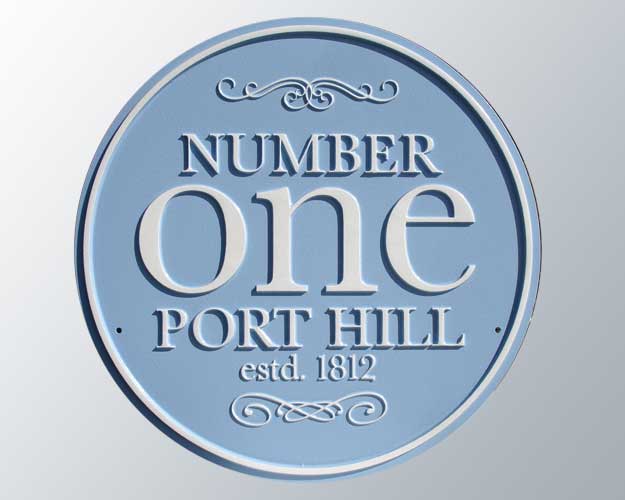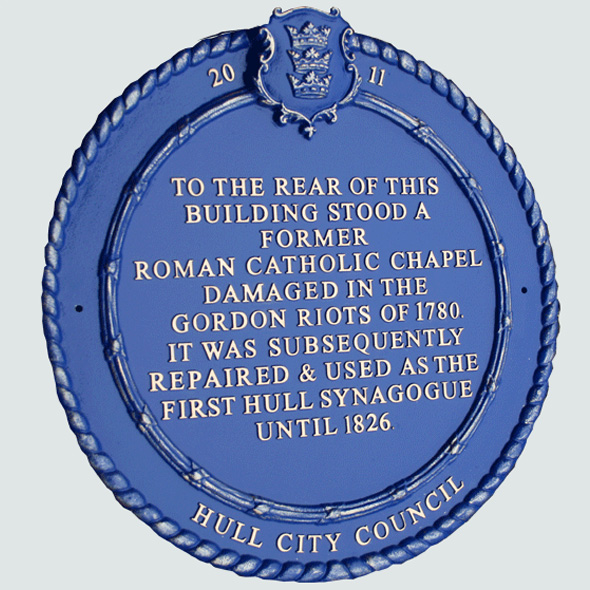As an experienced blue plaque manufacturer, you can speak to us about designing your own blue plaque. Celebrate a person or event in your family, your street or village, town or organisation etc.
Shapes & Sizes:
Our most popular size is 400mm diameter with many being 450mm or 500mm (English Heritage signs are 490mm diameter).
Materials:
Signs cast in polyurethane, or aluminium.
Finish & Appearance:
Letters, border, logos, motifs and complicated coats of arms are all realised in relief. Typeface is usually Times New Roman and our standard background colour is BS 20D45, although we can offer other letter styles and colours. Background colours are spray finished and the relief detail is hand painted by our talented artists.
Design & Artwork:
Clients are encouraged to send us any artwork and size details at an early stage so that we can assist in the design.
We try to keep the letter height to 10 or 12mm minimum to make the signs legible from a distance and usually use all uppercase to make a well balanced appearance.
Fixings:
Blue plaques normally come with a keyhole fixing in the back plus two holes drilled for wall fixing. We supply brass dome head screws painted to match the signs. Options include stainless steel security screws with fixing tool or captive nuts cast into the back of the sign and supplied with threaded rods for invisible fixing. These last two cost a little more.
Prices and Quotes:
Ask us for a quotation - as an experienced Blue Plaques maker we will be pleased to supply prices and drawings. It helps to know how much text there is on the signs as this affects the time involved in manufacture. See also Guide Prices.
For further information regarding materials, posts & fixings see our FAQ's.
What Are Blue Plaques?
English Heritage traditionally use Blue Plaques to indicate a place where a famous person once lived. The idea of erecting memorial tablets in London was first proposed by William Ewart MP in the House of Commons in 1863. The first plaque erected in London for the poet Lord Byron, was in 1867.
More recently we have used blue plaques to commemorate a famous person, as a lasting statement of the achievements of an individual or group of people or to mark a memorable event. They are also used to illustrate the history of a particular building or site, or erected to mark an historic occasion.








